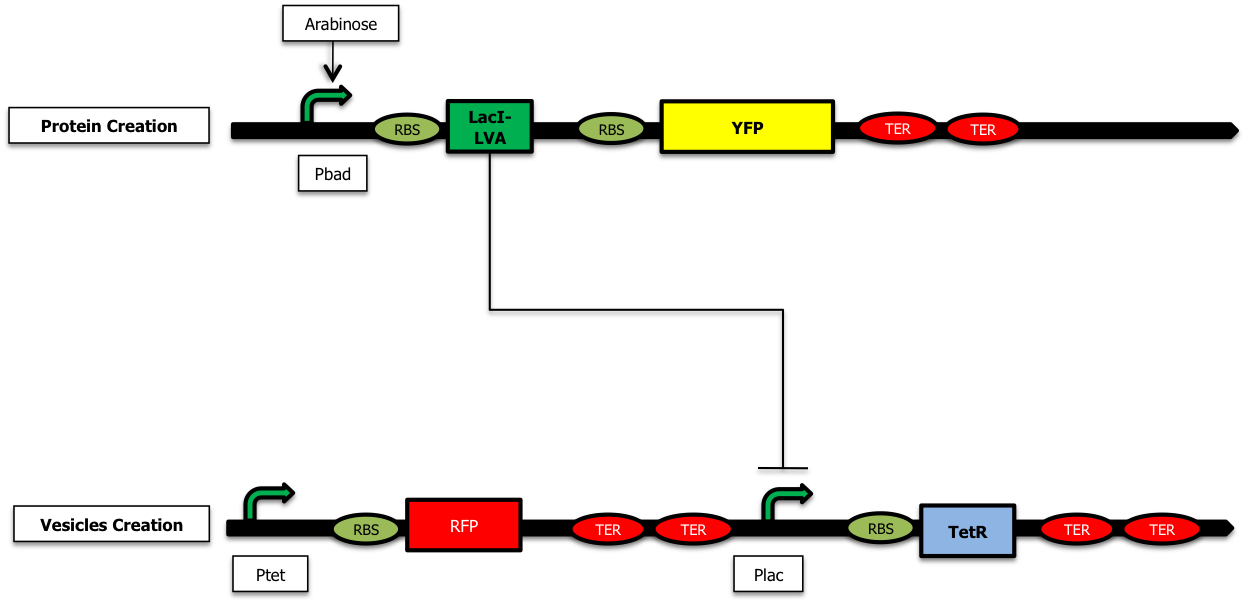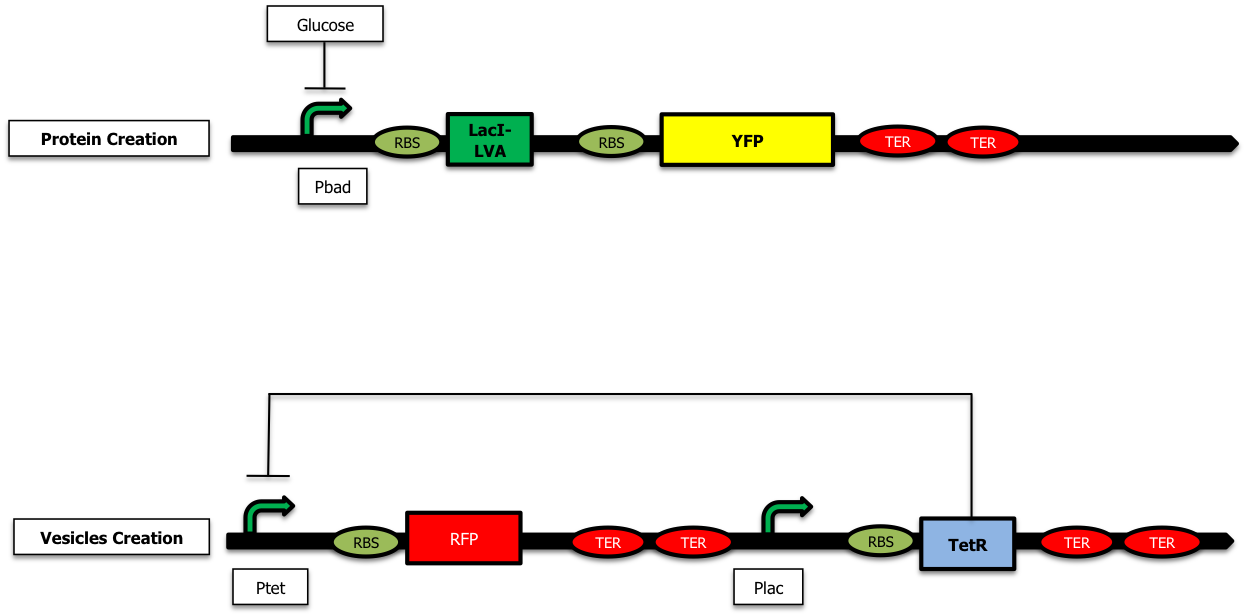Team:Paris/Production overview Construction
From 2009.igem.org
iGEM > Paris > Production > Overview > Constructions
Contents |
Overview
C. Construction
C.1. Creation of OMVs
To create vesicles, we started with a first simple construction only containing the nonfunctional TolR II biobrick placed donwstream a pTetR promoter [liens vers la construction - Nom/Freezer] . With the presence of arabinose in the medium, pBad is activated and TetR, a repressor of the pTetR promoter in created and represses the Pter promoter (Figure a). The addition of tetracycline or its analog, aTc, in the medium inhibits the repression thus allowing the creation of vesicles (Figure b).
images à refaire hein mon cricri...
For further precisions on the biobricks used as well as the plasmid backbones, please visit our parts design page .
C.2. The delay
To avoid a premature production of vesicles, we have introduced a delay system inside the plasmids[Liens - Nom/freezer] . This kind of device was studied by Hooshangi & Weiss [Références] using a transcriptional cascade made of two repressor namely TetR and LacI :
Nevertheless, as the pLacI promoter is leaking, we tried to exchange the order of the two repressors to avoid a low but constant expression of TolR. When there is arabinose in the medium, the creation of LacI represses the Plac promoter and prevent the creation of TetR ; this way, the Ptet promoter is no longer repressed and GFP is expressed in the medium.
This way, even if there is a little expression of the genes downstream the pLac promoter (when it is repressed), it leads to the creation of TetR and a stronger repression of the pTet promoter.
We also decided to place the pTet+TolRII device upstream the pLac+TetR cassette [Liens - Nom/freezer] ; as a consequence, even if our first terminator is not a 100% efficient, the RNA-polymerase will transcript the downstream part made of the TetR repressor. This repressor created by accident will then repress the expression of TolRII.
If we had switched these two parts, a bad efficiency of the terminator would have led to the expression of more TolRII which could be dangerous for the cell.
C.3. Caracterisation of the delay
We have started the construction of a system which would allow us to get a good evaluation of the delay creted by our device. In this construction, instead of expressing the proteins we want to send inside the vesicules and the TolRII protein, we express the [http://partsregistry.org/Part:BBa_E0030 YFP] and the RFP respectively. Using fluorescent microscopy, we can try to measure this delay.
As shown on the figure below, once there is arabinose in the medium, the pBad promoter is on thus allowing the creation of LacI ; LacI represses the pLac promoter and the TetR protein is no longer expressed. The pTet promoter in ON and RFP is created :
On the other hand, when there is glucose in the medium (and no Arabinose), LacI is no longer produced and the TetR protein is created : there is no more RFP synthetized :
References
[x] Folaf 'aire la référence/indexation
 "
"




